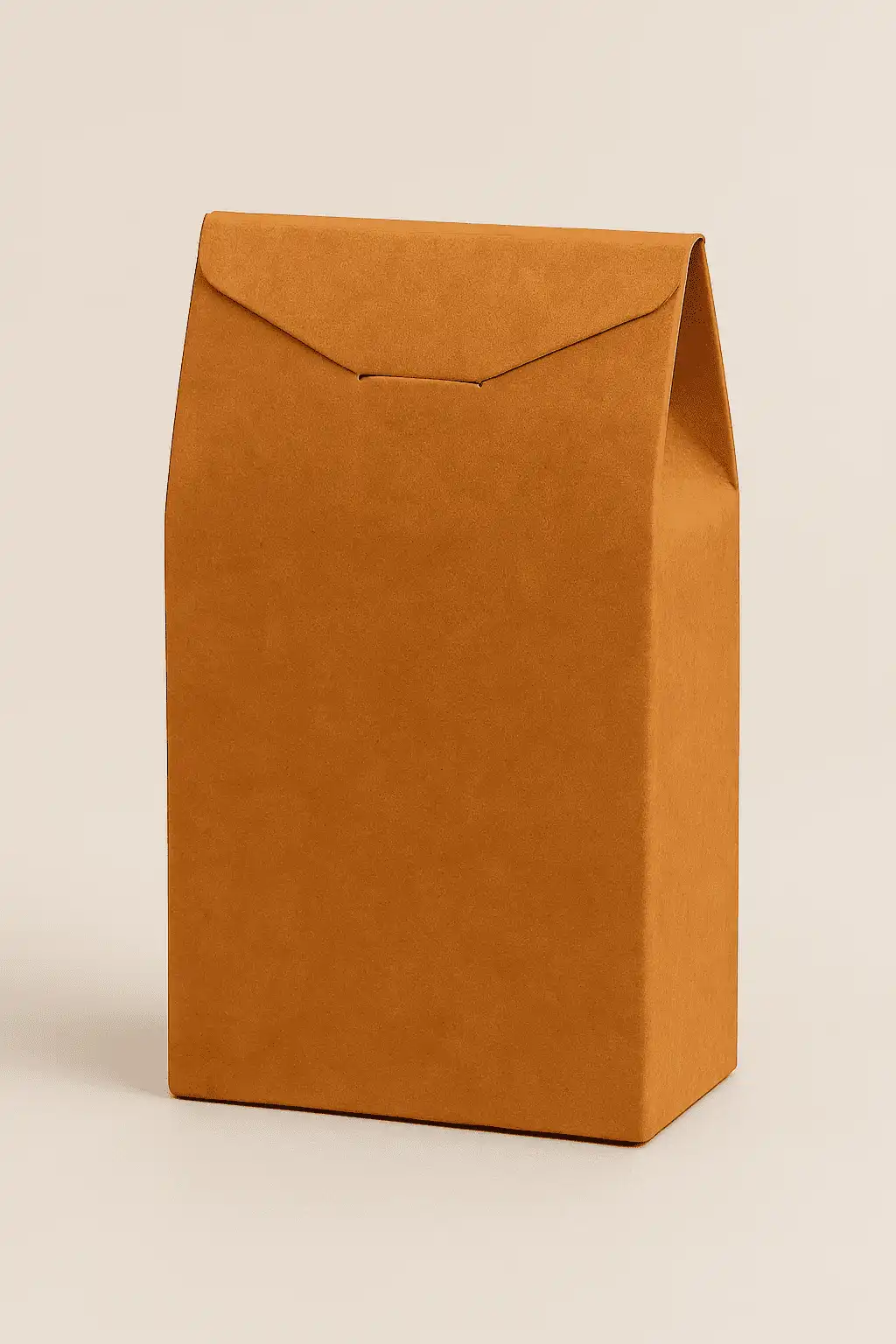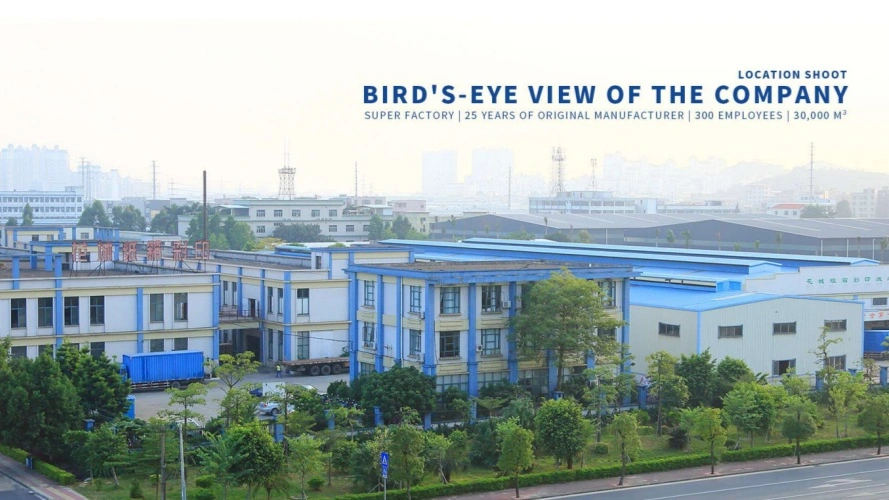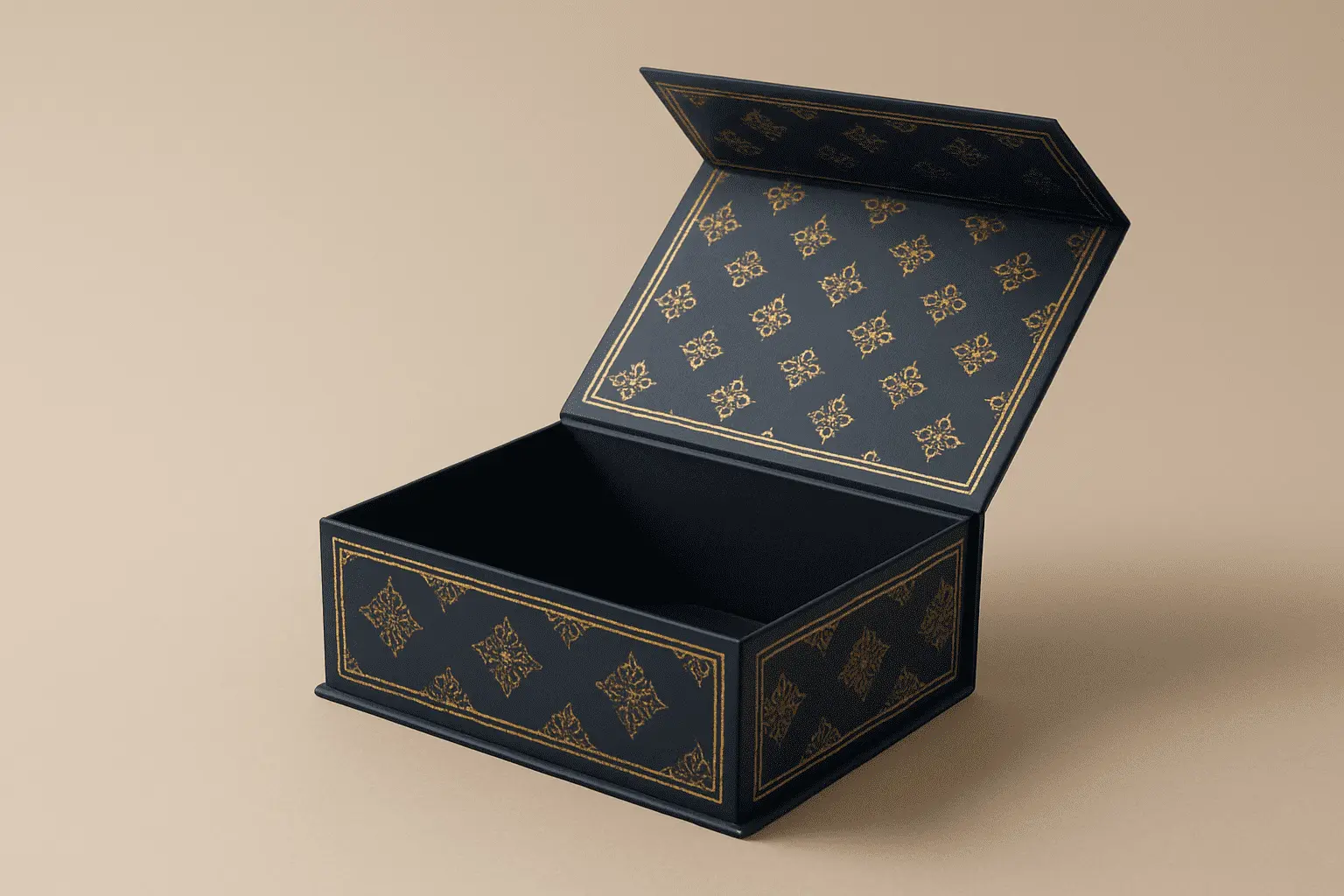Packaging Choices: Rigid Boxes Vs Foldable Rigid Boxes
In today's competitive marketplace, businesses face crucial decisions when selecting packaging solutions that balance functionality, cost-effectiveness, and brand appeal. The choice between traditional rigid boxes and innovative foldable rigid boxes has become increasingly significant as companies seek to optimize their packaging strategies. While rigid boxes have long been the standard for premium packaging applications, the emergence of foldable rigid box technology has revolutionized the industry by offering similar structural integrity with enhanced logistical advantages. This comprehensive analysis explores the fundamental differences between these two packaging approaches, examining their unique characteristics, applications, and benefits. Understanding these distinctions is essential for businesses aiming to make informed packaging decisions that align with their operational requirements, budget constraints, and sustainability goals while maintaining the premium presentation their products deserve.

Understanding the Structural Differences Between Rigid and Foldable Packaging Solutions
Construction Methods and Material Composition
Traditional rigid boxes are manufactured using a fixed construction approach where the box structure is permanently assembled during production. These boxes typically utilize grey chipboard or duplex chipboard as their core material, providing exceptional strength and durability. Grey chipboard, made from compressed recycled pulp under high heat and pressure, delivers excellent resistance to bending and compression while maintaining cost-effectiveness through its use of post-consumer waste paper. The uniform grey surface can be enhanced with various coating options, including SBS C1S or SBS C2S materials that offer superior printability and visual appeal. Duplex chipboard combines a smooth, bright white coating with a grey recycled-pulp core, creating an optimal balance between attractive finish and economical substrate. The foldable rigid box represents a revolutionary advancement in packaging engineering, featuring a proprietary collapsible structure that maintains the visual and tactile qualities of traditional rigid boxes while offering significant logistical advantages. These innovative folding carton solutions utilize advanced die-cutting techniques and precision creasing to create fold lines that allow the box to collapse flat for shipping and storage, then expand to full rigid form when assembled.
Engineering Innovations in Collapsible Design
The development of collapsible rigid boxes required extensive engineering expertise to overcome traditional packaging limitations. Unlike standard folding carton designs, foldable rigid boxes maintain their premium appearance and structural integrity while incorporating sophisticated folding mechanisms. The proprietary structures developed for these boxes are available in three distinct sizes: Large (suitable for magnetic gift boxes with product heights of 100-150mm), Medium (designed for heights of 50-100mm), and Tiny (optimized for heights of 20-50mm). Each size variant represents years of research and development, resulting in patented designs that ensure consistent performance across different applications. The engineering challenge lies in creating fold lines that are robust enough to withstand repeated assembly and disassembly while maintaining the box's aesthetic appeal. Advanced die-cutting technology and precision creasing techniques are employed to achieve clean, accurate folds without compromising the coating or printed surface. This innovation allows the foldable rigid box to achieve the same premium presentation as traditional rigid packaging while dramatically reducing shipping volumes and storage requirements.
Material Selection and Performance Characteristics
The choice of materials significantly impacts both rigid and foldable packaging performance. Premium SBS (Solid Bleached Sulfate) materials, whether C1S or C2S variants, provide exceptional print quality and structural integrity for both packaging types. SBS C1S offers a bright white appearance with excellent printability on the coated side while maintaining functional versatility on the uncoated reverse. This material's high stiffness and strength make it particularly suitable for rigid packaging applications requiring superior structural integrity. SBS C2S, featuring coating on both sides, delivers outstanding double-sided print quality with vibrant color reproduction and fine detail capabilities. For cost-conscious applications, CCNB (Clay Coated News Back) provides an economical alternative with its white clay-coated front and grey recycled back, offering reliable print performance at competitive pricing. The selection of metallic substrates can elevate either packaging type to luxury status, with high-gloss, mirror-like finishes available in various metallic shades including silver, gold, and copper. The automatic visual positioning production line used for collapsible rigid boxes ensures consistent quality regardless of material choice, with shorter production times and stable manufacturing processes compared to traditional methods.
Cost Analysis and Economic Benefits of Different Packaging Approaches
Manufacturing and Production Cost Considerations
The economic implications of choosing between rigid and foldable packaging solutions extend far beyond initial material costs. Traditional rigid box manufacturing requires substantial storage space for finished inventory, as these boxes maintain their full dimensional form throughout the supply chain. This storage requirement translates to increased warehousing costs, higher inventory carrying expenses, and greater complexity in logistics management. The production process for rigid boxes involves multiple assembly steps that must be completed during manufacturing, including gluing, folding, and structural reinforcement. These processes require specialized equipment and skilled labor, contributing to higher per-unit production costs. In contrast, the foldable rigid box manufacturing process leverages automated production lines with visual positioning technology, resulting in shorter production cycles and more consistent quality control. The flat-pack nature of folding carton production allows for significantly higher throughput in manufacturing facilities, as more units can be processed simultaneously. The investment in automated die-cutting machines and precision creasing equipment is offset by reduced labor costs and increased production efficiency. Additionally, the ability to ship and store boxes in their collapsed state creates immediate cost savings that accumulate throughout the product lifecycle.
Shipping and Logistics Cost Optimization
One of the most compelling advantages of collapsible rigid boxes is their dramatic impact on shipping and logistics expenses. These innovative packaging solutions can save more than 60% of shipping and storage costs compared to traditional rigid gift boxes, while offering 20-30% cost savings compared to standard collapsible alternatives. This cost reduction stems from the significantly reduced shipping volume when boxes are transported in their flat, collapsed state. Traditional rigid boxes occupy their full dimensional space regardless of whether they contain products, leading to inefficient use of shipping containers and warehouse space. The space efficiency of foldable rigid boxes allows companies to optimize their supply chain operations by reducing the number of shipments required and maximizing container utilization. This optimization extends to last-mile delivery costs, where reduced package dimensions can lead to lower shipping rates and improved delivery efficiency. The environmental benefits of reduced transportation also align with corporate sustainability initiatives, as fewer shipments result in lower carbon emissions and reduced environmental impact. Distribution centers can stock larger quantities of collapsed boxes in the same storage space, improving inventory management and reducing stockout risks.
Long-term Economic Impact and Return on Investment
The economic benefits of foldable rigid box solutions compound over time, creating substantial long-term value for businesses. The initial investment in collapsible packaging technology pays dividends through reduced operational costs, improved inventory management, and enhanced supply chain efficiency. Companies can achieve better cash flow management by reducing inventory carrying costs and minimizing warehouse space requirements. The flexibility offered by folding carton solutions allows businesses to respond more quickly to market demands and seasonal fluctuations without the burden of excessive rigid box inventory. Quality control benefits also contribute to long-term cost savings, as the automated production processes used for collapsible rigid boxes result in more consistent output and reduced waste. The ability to apply various surface treatments, including cold or hot foil stamping, UV coating, frosted touch effects, and embossing, ensures that foldable options can match the premium appearance of traditional rigid boxes without sacrificing visual impact. This versatility allows companies to maintain their brand positioning while achieving significant cost efficiencies. The durability and reusability of well-designed foldable rigid boxes can extend their lifecycle, providing additional value to end consumers and supporting circular economy principles.
Performance Comparison and Application Suitability
Structural Integrity and Durability Assessment
Both rigid and foldable packaging solutions must meet stringent performance standards to protect products during transportation and storage while maintaining their aesthetic appeal throughout the supply chain. Traditional rigid boxes excel in applications requiring maximum structural protection, particularly for heavy or fragile items that demand unwavering support. The permanently assembled structure of rigid boxes provides consistent protection without relying on end-user assembly, making them ideal for high-value products where packaging failure is not acceptable. However, modern collapsible rigid boxes have largely closed this performance gap through advanced engineering and material selection. The proprietary structures used in foldable designs undergo rigorous testing to ensure they can withstand the stresses of repeated folding and unfolding while maintaining their protective qualities. The automatic visual positioning production line used in manufacturing ensures consistent fold placement and structural integrity across all units. Quality control measures include stress testing, compression testing, and durability assessments that verify each design meets or exceeds traditional rigid box performance standards. The use of premium materials such as SBS C1S and C2S in foldable rigid box construction ensures that these solutions can handle demanding applications while providing the flexibility benefits that traditional rigid boxes cannot offer.
Brand Presentation and Marketing Impact
The visual and tactile presentation of packaging plays a crucial role in brand perception and consumer purchasing decisions. Traditional rigid boxes have long been associated with premium products and luxury experiences, creating strong psychological connections between box structure and product value. The substantial feel and permanent construction of rigid boxes convey quality and attention to detail that resonates with consumers. Foldable rigid boxes maintain these critical brand presentation elements while offering additional benefits that can enhance marketing effectiveness. The ability to ship products with flat-packed boxes allows for creative unboxing experiences where consumers participate in the final assembly process, creating memorable brand interactions. Advanced printing technologies, including hot foil stamping, embossing, debossing, and UV coating applications, can be applied to both packaging types with equal effectiveness. The combination of spot UV and embossing creates shiny, raised elements that enhance both visual appeal and tactile interest. Holographic foil stamping options provide premium anti-counterfeiting features with vibrant, angle-shifting colors that command attention on retail shelves. The versatility of surface finishing options ensures that foldable rigid boxes can achieve the same luxury presentation as traditional alternatives while offering superior logistics benefits.
Industry-Specific Applications and Use Cases
Different industries present unique packaging challenges that influence the choice between rigid and foldable solutions. The cosmetics and personal care industry demands packaging that reflects product quality while managing cost pressures from competitive markets. Foldable rigid boxes excel in this sector by providing luxury presentation with cost-effective logistics, allowing brands to maintain premium positioning while optimizing operational efficiency. Electronics packaging requires protective qualities that safeguard sensitive components during shipping, making both rigid and foldable options viable depending on specific product requirements. The food industry benefits from the hygienic properties of SBS materials and the efficient storage capabilities of collapsible designs, particularly for seasonal packaging needs. Gift and promotional packaging applications particularly favor foldable rigid boxes because they combine the premium appearance expected by recipients with the cost efficiency needed for promotional campaigns. The magnetic closure systems available for both packaging types provide secure product retention and enhance the unboxing experience. Custom die-cutting capabilities allow for precise shape creation and window formations that showcase product features regardless of the chosen packaging approach. The flexibility to accommodate various product dimensions through the three available sizes (Large, Medium, and Tiny) ensures optimal fit for diverse applications while maintaining structural integrity and visual appeal.
Conclusion
The choice between rigid boxes and foldable rigid boxes ultimately depends on balancing brand presentation requirements with operational efficiency needs. While traditional rigid boxes continue to excel in specific applications requiring maximum structural integrity, foldable rigid boxes represent the future of premium packaging by combining luxury presentation with significant cost savings and environmental benefits. The innovative engineering behind collapsible designs has successfully addressed historical concerns about durability and appearance, creating solutions that match traditional rigid box performance while delivering superior logistics advantages. Companies seeking to optimize their packaging strategies should carefully evaluate their specific requirements, considering factors such as product protection needs, storage constraints, shipping volumes, and brand positioning goals to make informed decisions that support long-term business success.
Ready to revolutionize your packaging strategy with innovative foldable rigid box solutions? Partner with Guangzhou Fetching Color Printing & Packaging Ltd., where 25 years of industry expertise meets cutting-edge technology. Our team of 300+ skilled professionals operates from a state-of-the-art 50,000㎡ facility, serving over 1,000 loyal customers worldwide with certified quality management systems including ISO14001-2015, ISO9001-2015, and FSC certifications. From our German Heidelberg printing machines capable of handling 1.62m width formats to our 15 fully automatic die-cutting machines and 100 skilled manual workers, we deliver exceptional packaging solutions tailored to your unique needs. Experience the perfect blend of premium presentation and cost efficiency with our proprietary collapsible rigid box designs. Contact us today at public@fetchingprinting.com to discover how our innovative packaging solutions can transform your brand presence while optimizing your operational costs.
References
1. Johnson, M.R., & Thompson, K.L. (2023). "Sustainable Packaging Innovation: The Evolution of Collapsible Rigid Box Technology." Journal of Packaging Science and Technology, 45(3), 178-195.
2. Chen, W.H., Martinez, S.A., & Williams, R.J. (2022). "Cost-Benefit Analysis of Foldable Packaging Solutions in Modern Supply Chains." International Packaging Research Quarterly, 38(7), 334-352.
3. Anderson, P.K., Davies, L.M., & Rodriguez, C.E. (2023). "Material Science Advances in Premium Packaging: A Comparative Study of Rigid and Collapsible Designs." Advanced Materials in Packaging Engineering, 12(4), 89-106.
4. Zhang, H.Y., Brown, T.S., & Kumar, V.N. (2022). "Environmental Impact Assessment of Innovative Packaging Technologies: Rigid vs. Foldable Solutions." Sustainable Packaging International, 29(11), 445-463.

Based on your location and order quantity, you will have the opportunity to receive a limited time free shipping promotion!

Corporate Purpose
